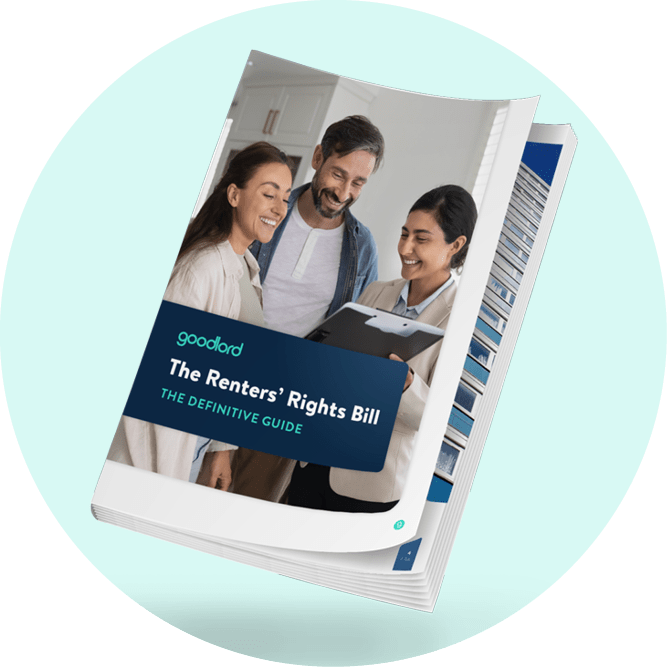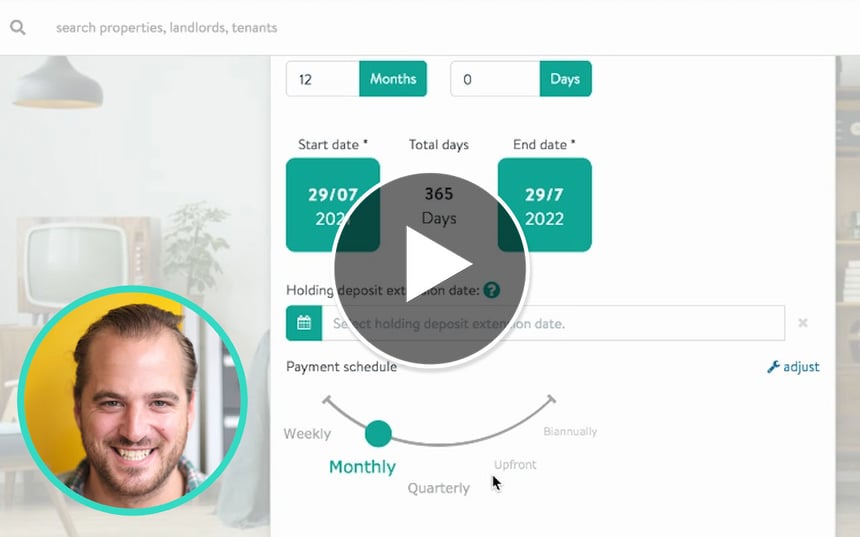Your guide to right to rent checks in England
Right to Rent fines have dramatically increased with letting agents and landlords still being caught out. Here's what letting agents need to know about the checks.
New fines of up to £20,000 for repeat offences of non-compliance with Right to Rent check rules have significantly increased. Landlords and letting agents therefore need to stay vigilant when checking the Right to Rent of all their adult applicants in England before they enter into a new tenancy agreement.
From Tuesday 13 February, fines will increase from £80 per lodger to £5,000, and £1,000 per occupier to £10,000. Repeat breaches will face fines of £10,000 per lodger and £20,000 per occupier.
The latest data from the Home Office report that 62 fines were issued in Q1 2024, with a total of £165,680 being charged. The average fine in 2024 so far is £2,672, which is a 173% increase from 2023.
Read our guide to find out more:
- What is a Right to Rent check?
- Updates on Right to Rent fines increase from February 2024
- Latest pre-settled status extension scheme
- Conducting a manual check
- Using the Home Office Landlord Checking Service
- Using the Home Office online service
- Checking B5JSSK citizens
- Future digital checks
What is a Right to Rent check?
A Right to Rent check "prevents those without lawful immigration status" from renting a property illegally.
Conducting referencing checks accurately and keeping records of those checks will help landlords and agents avoid fines for non-compliance.
Agents need to check the Right to Rent of prospective tenants and anyone else who will use the property as their main home, before the tenancy agreement officially starts - and in the 28 days before that start date for tenants with a time-limited right.
It's important that you conduct these checks and keep accurate records for a year after the tenancy agreement ends, as you could face an unlimited fine and up to five years in prison if you are found to have knowingly rented to someone who didn't have the right to live in England.
Unlimited right to rent
Some applicants will have "unlimited Right to Rent". This covers British and Irish citizens, those with EU Settled Status, and people who have the "right of abode", who have indefinite leave to remain, or simply have no time limit on their stay in the UK.
Time-limited right to rent
Other applicants will have a "time-limited" Right to Rent, including those with pre-settled status. For this group of tenants, you'll need to understand how long they're eligible to stay in England and then do a follow up check before that period ends, to make sure you aren't liable for any penalty.
If your tenant loses their Right to Rent during their tenancy, you'll need to report this to the Home Office.
Updates on Right to Rent fines increase from February 2024
Starting on 13 February, individuals with "in-time applications for permission to in the UK, an appeal, or administrative review", can now prove through the new Home Office online service their Right to Rent.
The government have also increased the maximum civil penalty fines for non-compliance. For first time breaches, landlords will now be charged £5,000 per lodger and £10,000 per occupier. This has increased drastically from the original £80 per lodger, and £1,000.
For repeat breaches, fines that were previously £500 for lodgers and £3,000 for occupants have now increased to £10,000 and £20,000 respectively.
Do your landlords understand Right to Rent checks? Read this blog to find out more.
Latest pre-settled status extension scheme
In June 2024, the Home Office announced that landlords will no longer be required to "carry out follow-up checks on holders of pre-settled status"
As defined by the Home Office, Pre-settled status means a person will have "limited leave to enter or remain issued under the EU Settlement Scheme. It is initially given for five years and will be extended unless the person no longer meets the requirements for it".
This means that a right to rent check will only be required before the tenancy starts for holders with a pre-settled status and settled status granted under the EU Settlement Scheme (EUSS).
If a letting agent or landlord has conducted an initial check correctly before introducing this scheme, they will not be penalised by the Home Office.
Letting agents or landlords can choose to carry out follow-up checks, or if they need to conduct a new check if a tenant is entering a new tenancy agreement, for example, "entering into a new fixed term or following a variation, surrender or assignment of the
existing tenancy", they need to do it in a non-discriminatory manner.
Conducting the Right to Rent checks
Conducting a manual check
To conduct a manual check, you need to see the original documents that prove your tenants' Right to Rent - you can find a list of accepted documents on the government's site.
You then need to check these documents in your applicant's presence, to assess if the documents are genuine and not tampered with, and that your applicant's identity matches the document. Photographs and dates of birth should be consistent across the documents and, if any names differ, your applicant needs to provide proof of why. You also need to check that their immigration leave to remain has not expired.
When you've checked the applicant's documents, you'll need to keep records of this check, with the date it took place, and keep that information for at least a year after the tenancy ends.
Landlords and agents are not allowed to "mandate how an individual proves their Right to Rent." If a tenant is eligible for a manual check and they prefer this method, landlords and agents must accept their tenant's choice.
Using the Home Office Landlord Checking Service
If the applicant doesn't have the necessary documents, you can use the Home Office Landlord Checking Service to conduct the check. You can request this check by completing an online form. You'll need to keep a record of the certificate of application and wait until receiving an answer before starting the tenancy agreement.
You'll receive either a positive or negative response from the Home Office on whether your applicant has the Right to Rent the property or, if the service hasn't considered your request after two working days, you'll receive confirmation that you can let your property to the applicant, valid for 12 months.
Using the Home Office online service
Who can use this service
Landlords can use the Home Office's online service, introduced to make checks post-Brexit. Applicants eligible for this service are those:
- With a biometric residence card or permit, or an eVisa
- With settled or pre-settled status
- That have applied for a visa and used the "UK Immigration: ID Check" app to scan their ID on their phone
Since 6 April 2022, if your applicant has a Biometric Residence Card or is a Permit holder, you can no longer check their documents manually. You have to use this online service.
Applicants who have received a digital status via an eVisa can now only use the Home Office's online service. Landlords can access an individual's Right to Rent information on the online service once they have received their share code and date of birth.
How the online service works
Your eligible applicants will need to give you their share code - which they can get on the government's site and will expire after 90 days - and date of birth. You'll need to then enter these details into the online service, with your applicant present via video call.
This means that you can then check the photo on the service's profile page against your applicant. You'll then need to save their profile page as evidence of the check.
Checking nationals of Australia, Canada, Japan, New Zealand, Singapore, South Korea or the USA who are visitors to the UK
Since 2019, B5JSSK citizens have been able to arrive in the UK via eGate, and therefore have no stamp in their passports for the date of arrival. They will have the right to stay in the UK for six months, but then will need a visa to stay for longer.
You'll need to first check their passports and evidence that they arrived in the UK within the last six months. This evidence could be their boarding pass, travel ticket, booking confirmation - or another document which confirms the date of their arrival in the UK.
The check can be done either in person or over video call but you - the landlord or agent - will need to hold the original documents for the check.
A second check after six months
Even though your tenants should have their visa once this 6-month period ends, the Right to Rent framework requires you to conduct another check before the end of a 12-month period instead, to prove that your tenants have a right to continue renting.
Propertymark advises that "evidence of a correctly administered 12-month check" will give you a "solid basis" to avoid fines.
digital checks with certified ID Validation Technology providers
The Home Office changed legislation from 6 April 2022 to allow landlords and agents to use certified Identity Service Providers (IDSPs) using Identity Document Validation Technology (IDVT) to digitally check the Right to Rent of British and Irish citizens.
With the new technology providers, landlords can verify their tenants' identity remotely and prove their eligibility to rent. However, tenants still have the right to request a manual check.
If tenants choose to use the new process, they will be able to upload images of their personal documents, instead of sharing physical documents with their landlords, and will help landlords recognise fraudulent documents.
This article is intended as a guide only and does not constitute legal advice. For more information, visit gov.uk.











